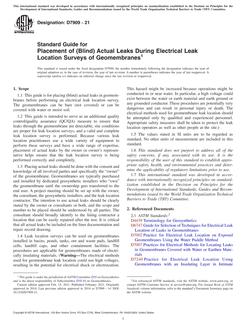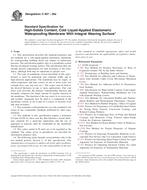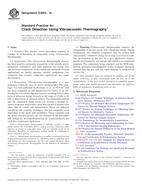1.1 This practice covers procedures for determining operating regions that are safe from metallization burnout induced by current pulses of less than 1-s duration.
Note 1 – In this practice, “metallization“ refers to metallic layers on semiconductor components such as interconnect patterns on integrated circuits. The principles of the practice may, however, be extended to nearly any current-carrying path. The term “burnout“ refers to either fusing or vaporization.
1.2 This practice is based on the application of unipolar rectangular current test pulses. An extrapolation technique is specified for mapping safe operating regions in the pulse-amplitude versus pulse-duration plane. A procedure is provided in Appendix X2 to relate safe operating regions established from rectangular pulse data to safe operating regions for arbitrary pulse shapes.
1.3 This practice is not intended to apply to metallization damage mechanisms other than fusing or vaporization induced by current pulses and, in particular, is not intended to apply to long-term mechanisms, such as metal migration.
1.4 This practice is not intended to determine the nature of any defect causing failure.
1.5 This standard does not purport to address all of the safety concerns, if any, associated with its use. It is the responsibility of the user of this standard to establish appropriate safety and health practices and determine the applicability of regulatory limitations prior to use.
Product Details
- Published:
- 06/15/2008
- Number of Pages:
- 5
- File Size:
- 1 file , 94 KB


